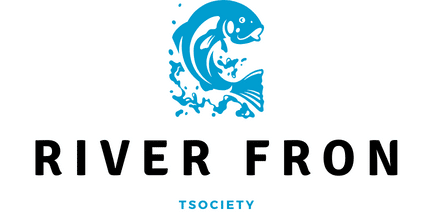What Are the Best Practices for Introducing Coding in Early Childhood Education?

Today, the digital world is more than just a few clicks and swipes on a screen. It’s about understanding the complex networks and sequences that make those clicks and swipes possible. Hence, coding is emerging as a new kind of literacy for the 21st century. Introducing coding to young children might seem ambitious, but it’s not as daunting as it may sound. This article will guide you through the best practices for introducing coding to kids in early childhood education.
1. Start with Basic Concepts
Before diving into the deep sea of coding, it is crucial to introduce your students to the basic concepts that form the building blocks of any programming language. You can liken these concepts to the ABCs of coding.
Also to discover : How to Design a User-Friendly Interface for Mobile Banking Apps?
The earliest coders were not born programmers – they started by grasping simple, yet essential, concepts like sequences, loops, and conditionals. These concepts form the basis of coding. For instance, a sequence in coding is similar to following a recipe. Loops are about repetition like singing a chorus repeatedly in a song. Conditionals can be explained as decisions – if it’s raining, take an umbrella.
Therefore, don’t feel the need to rush into specific programming languages. Instead, begin with the core concepts of coding. Teaching these in a fun, engaging manner will make coding less intimidating to your students.
Also to discover : Travel-inspired temporary tattoos: transform your journey into art
2. Use Visual-Based Coding Tools
Visual-based coding tools like Scratch are excellent for beginners, especially children. They remove the complexities of syntax, which can be overwhelming for young kids, and allow them to understand coding concepts in a more intuitive way.
In visual-based coding, the blocks of code are represented graphically, rather than as text. This makes it easier for children to grasp the logic of coding, as they simply need to drag and drop the blocks to make a program. It’s essentially like solving a puzzle, making the learning process fun for the kids. Besides, using these tools will foster creativity as children can design their own games and animations.
3. Incorporate Coding into Existing Lesson Plans
Integrating coding into existing lesson plans is a great way to introduce the subject to your students. It doesn’t have to be a standalone topic of study. In fact, coding intersects with many other subjects in fascinating ways.
For example, in a math lesson, kids can be introduced to the concept of variables and operations in coding. In English, they can learn about sequences and conditionals through storytelling. Even art can be used to teach children about algorithms, by guiding them to create patterns using a specific set of instructions.
This way, your students will not only learn to code but also understand its relevance and application in various aspects of learning and life.
4. Encourage Hands-On Learning
Just as we cannot learn to ride a bike by simply reading about it, we cannot learn to code without coding. Therefore, encourage your students to get hands-on with coding. Let them play around with the code, make mistakes, troubleshoot, and learn.
There are many online platforms that provide coding games for kids. These games present coding challenges that need to be solved, making learning interactive and entertaining.
Remember, it’s not about how quickly they can write a line of code, but how well they understand what they are doing. So, let your students take their time to explore and learn at their own pace.
5. Foster a Growth Mindset
Above all, it’s crucial to foster a growth mindset in your students when teaching coding. Learning to code is like learning a new language. It takes time, practice, and a lot of patience. It’s important that your students understand this and are not disheartened by the challenges they face.
A growth mindset will encourage them to see their mistakes as opportunities to learn, rather than as failures. Remind them that every coder, even the best ones, faced hurdles in their learning journey. It’s the process of overcoming these hurdles that transforms a novice into a skilled coder.
In conclusion, introducing coding in early childhood education can be a rewarding experience for both you and your students. By starting with basic concepts, using visual-based coding tools, integrating coding into existing lessons, encouraging hands-on learning, and fostering a growth mindset, you can make coding an engaging and enjoyable subject for your students. But remember, every child is unique and will learn at their own pace. So, be patient, persistent, and let your students explore the world of coding at their own speed.
6. Nurture Problem-Solving Skills
While coding is a technical skill, it also greatly enhances problem-solving skills. As you introduce coding to your young students, make sure to put emphasis on the aspect of problem-solving. The ability to identify a problem, break it down into smaller parts, and solve it step by step is integral to both coding and life.
Have your kids engage in coding activities that require them to think critically and solve problems. For instance, you can give them a task to create a simple animation using a visual-based coding tool. The end goal should be clear, but the steps to reach that goal should be left to them. This way, they’ll have to figure out how to use their coding skills to achieve the desired output.
During this process, kids learn how to approach a problem, devise a plan, execute it, and most importantly, how to handle unexpected outcomes or errors. Remember, in coding, troubleshooting is half the battle. Guide your students to understand that it’s okay to make mistakes, as long as they learn from them and find ways to rectify them.
7. Create a Supportive Learning Environment
The environment in which kids learn to code plays a significant role in their learning journey. A positive, supportive environment can instill a love for learning code in kids, encourage them to take risks, make mistakes, and learn from them.
Create a classroom culture that encourages questions, exploration, and creativity. Whenever a student accomplishes a task, ensure to celebrate their success. This will not only boost their confidence but also motivate them to learn more.
At the same time, make sure to offer help and guidance when they encounter difficulties. Some kids might find certain coding concepts harder to grasp than others. Be patient and offer individual assistance if needed. You may use different methods or examples, or even bring in other resources, to help them understand.
Remember, the goal is not to make all your students master coders, but to introduce them to the world of computer programming in a fun and engaging way. Make the learning journey enjoyable, and they will be motivated to continue learning and improving their coding skills.
Conclusion
Introducing coding to young children in early childhood education might indeed seem like a daunting task. However, with the right strategies and mindset, it can be a fun, rewarding, and enriching experience for both you and your students.
By starting with the basic principles of coding, utilizing visual-based coding tools, incorporating coding into existing lessons, fostering a growth mindset, nurturing problem-solving skills, and creating a supportive learning environment, you set your students on a path to not just learning code but also improving their logical thinking, creativity, and problem-solving skills.
Remember, the goal isn’t to create proficient coders overnight, but to spark an interest in coding and computer science that can grow with them. Encourage your students to explore, experiment, and enjoy the process of learning to code. After all, every master coder started as a beginner.
